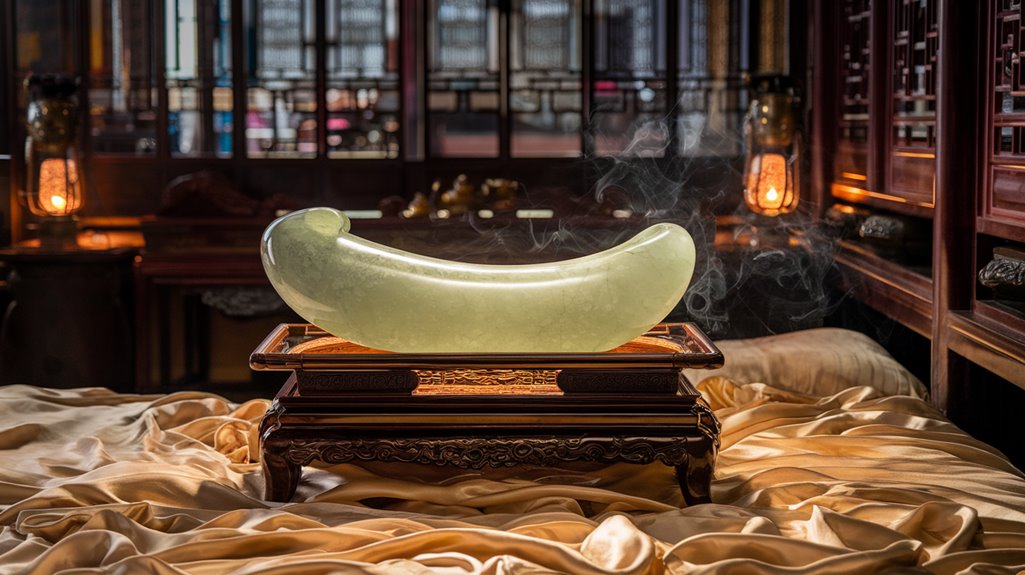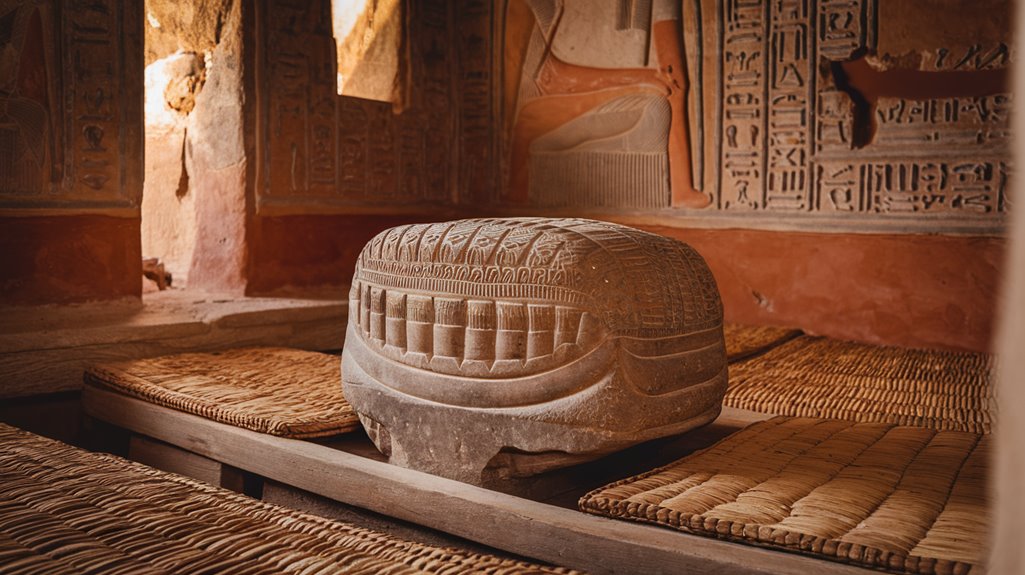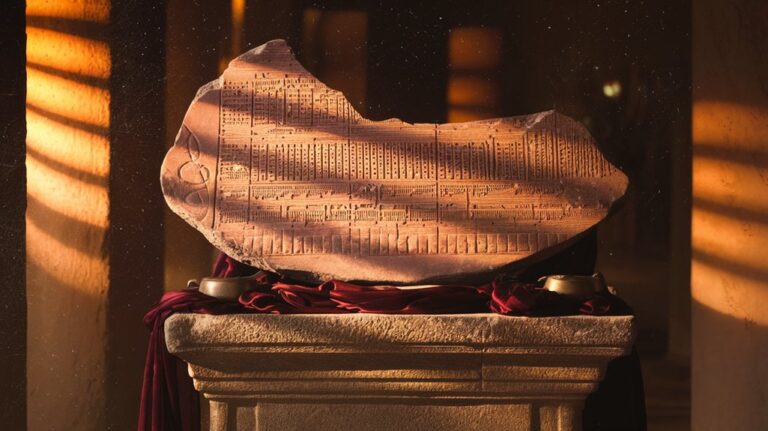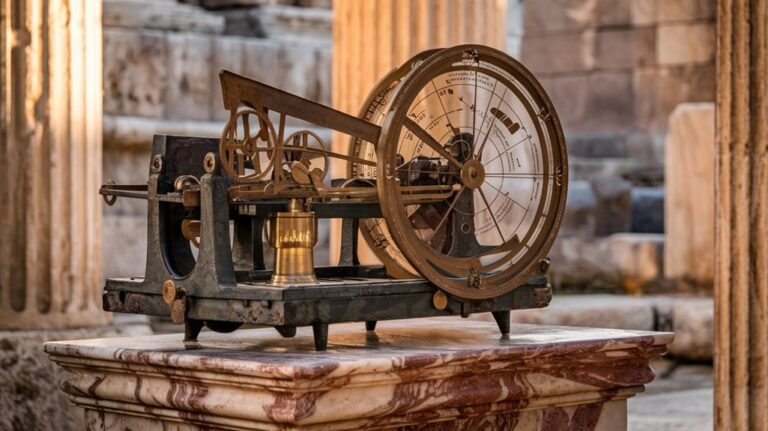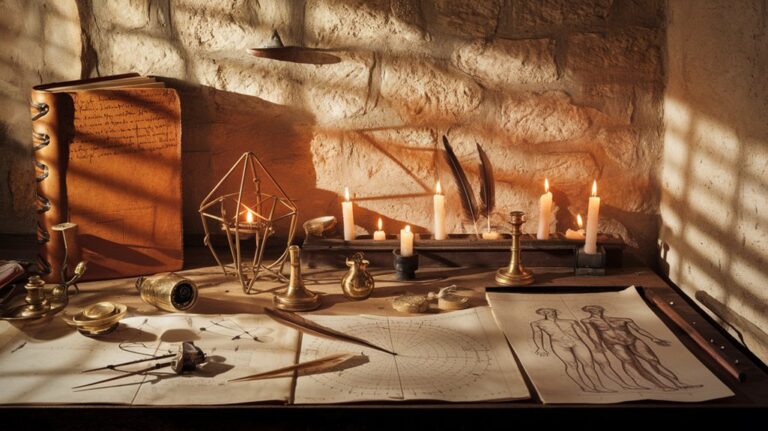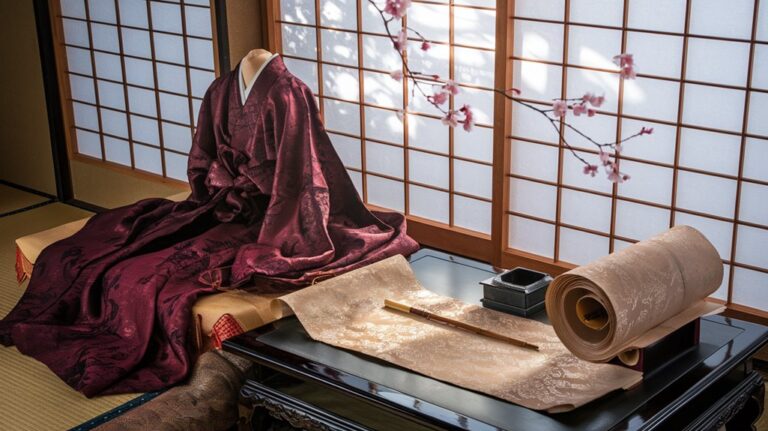Ancient Civilizations Used Stone Pillows
Stone, nature's unyielding mattress, might seem like an unlikely choice for your nightly rest. Yet when you consider the ingenuity of ancient civilizations, you'll find that stone pillows served as more than just a hard place to lay your head. During the heights of Mesopotamian and Egyptian cultures, these carved cradles weren't merely functional items—they represented status, spiritual protection, and sophisticated engineering. If you're wondering how anyone could sleep on stone, there's more to this story than meets the eye.
The Origins of Stone Pillows in Mesopotamia
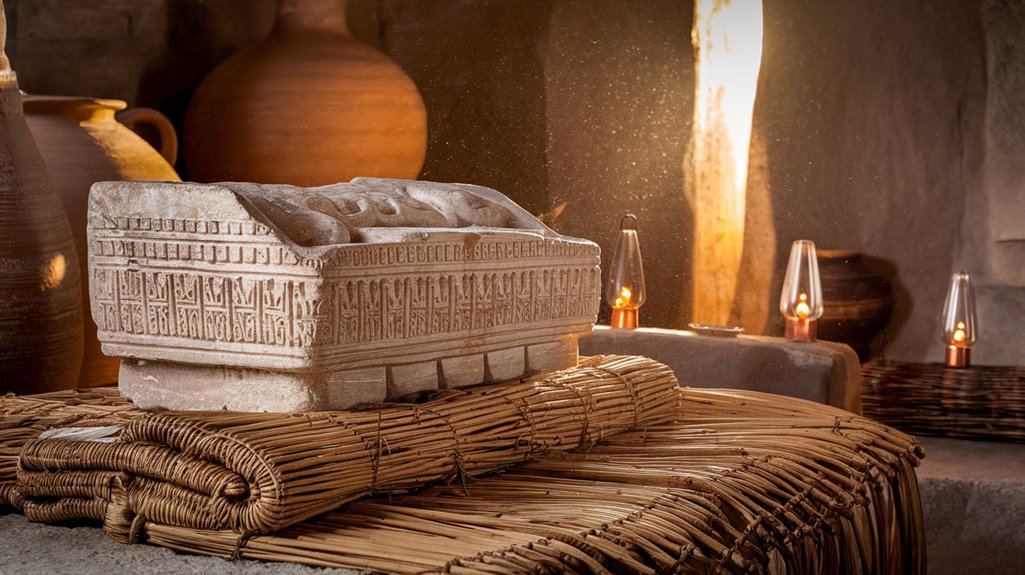
While most people today wouldn't dream of resting their heads on stone, the ancient Mesopotamians pioneered the use of stone pillows around 7,000 BCE.
These early stone pillow designs weren't created for comfort but served an essential practical purpose in ancient sleep practices. You'd find them carved into a distinctive cradle shape that elevated the head, preventing insects from crawling into sleepers' mouths, noses, and ears during the night.
If you were wealthy in ancient Mesopotamia, you'd likely own one of these stone pillows as a symbol of your status. The ancient Egyptians also utilized these stone pillows, believing that the head's elevation played a crucial role in their spiritual life.
Despite their hard surface, they actually provided effective support for the neck, helping to relieve pain in the back, neck, and shoulders – though comfort wasn't their primary purpose. Ancient Egyptians placed these pillows in tombs with mummies to maintain the body's vigor in the afterlife.
Egyptian Headrests: Design and Spiritual Significance
Building upon Mesopotamia's stone pillow tradition, ancient Egyptians developed their own distinct version: the headrest. You'll find these objects were masterfully crafted from wood, stone, ivory, and even glass, showcasing ancient craftsmanship through their three-part design: a wide base, an upright stand, and a curved top piece.
The headrest symbolism went far beyond mere functionality. You'll see protective deities like Bes carved into these pieces, as Egyptians believed headrests safeguarded both the living and the dead. The careful design ensured comfort during sleep, with heights specifically measured to align properly with the neck. This tradition persisted from the First Dynasty period through to Ptolemaic times.
They weren't just practical items for sleeping – they served as spiritual guardians, protecting the head, which was considered the seat of spiritual life. This belief was so important that you'll find headrest amulets wrapped within mummy bandages, ensuring protection in the afterlife.
Practical Benefits of Ancient Stone Pillows
Despite their seemingly uncomfortable nature, ancient stone pillows offered remarkable practical benefits that made them essential tools for daily life and health. Their comfort features went beyond simple head support, serving as protective barriers against unwanted pests and vermin while promoting better circulation.
These cultural practices spread across civilizations because they offered practical advantages:
- You'd stay cooler during hot nights as air could flow freely beneath your head.
- You'd maintain proper head and neck alignment, preventing strain and discomfort.
- You'd protect yourself from insects and small creatures entering your ears, nose, or mouth.
Ancient Egyptians crafted these pillows from various materials including marble and ivory, demonstrating their sophistication in design and craftsmanship.
The firm support of stone pillows proved particularly effective for maintaining body vigor and avoiding various ailments. These headrests were commonly found in Egyptian tombs as essential items for the afterlife.
While they might seem harsh by today's standards, these pillows were ingeniously designed to address multiple practical concerns simultaneously.
From Stone to Softness: The Evolution of Pillow Materials
The remarkable journey from stone pillows to today's plush comfort spans thousands of years of human innovation. You can trace this evolution from ancient Mesopotamia, where stone pillows served primarily to elevate heads and deter insects, to the gradual introduction of softer materials by the Greeks and Romans. Early stone pillows were often carved into cradles.
In Ancient Egypt, pillows made of stone and wood were symbols of wealth, marking clear social distinctions between nobility and common people.
The cultural evolution of pillow materials gained momentum during the Middle Ages when feather-filled designs became popular among those who could afford them.
You'll find that the Renaissance period's focus on luxury accelerated this transformation, while the Industrial Revolution made soft pillows accessible to more people.
Today's pillow materials reflect centuries of advancement, offering you choices from memory foam to synthetic fills, all designed to provide the perfect balance of comfort and support—a far cry from the stone beginnings of 7,000 BCE.
Archaeological Discoveries and Cultural Impact
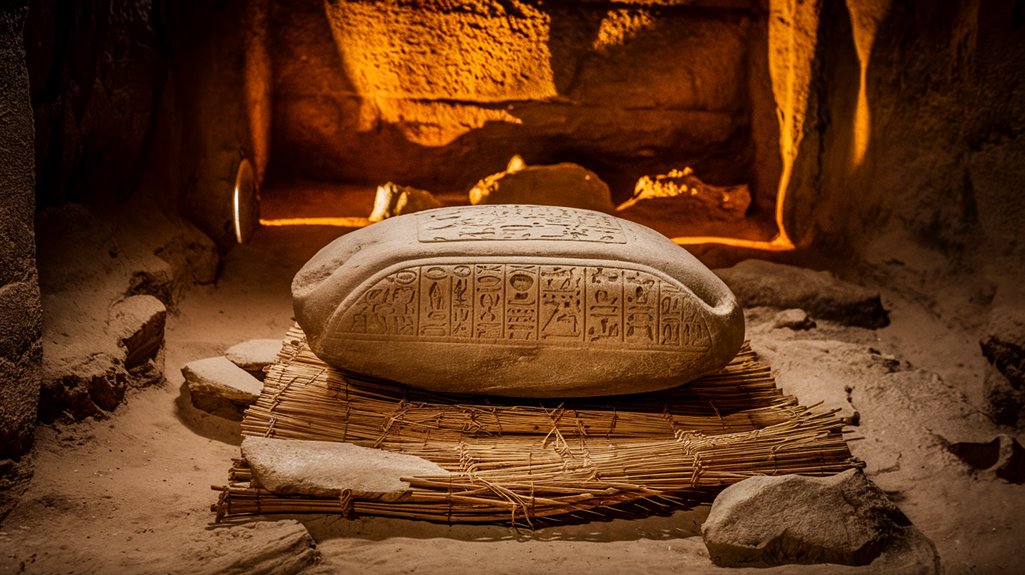
While exploring ancient Egyptian tombs, archaeologists have uncovered remarkable stone pillows that reveal both practical ingenuity and deep spiritual significance.
You'll find these artifacts, dating from 3050 BC to 30 BC, played a vital role in both daily life and burial rituals. The stone headrests helped people stay cool by elevating their heads, allowing air to circulate while sleeping. The cultural practices surrounding these stone headrests reflect the ancient Egyptians' belief that the head was the center of spiritual life.
Key discoveries include:
- Protective engravings featuring gods like Bes to ward off evil spirits
- Various materials used, from marble and ivory to ceramic and glass
- Placement in tombs, including King Tutankhamun's, to guarantee safety in the afterlife
These findings demonstrate how everyday objects served dual purposes, merging practical comfort with spiritual protection.
You're witnessing a fascinating blend of utility and belief through these archaeological treasures.

